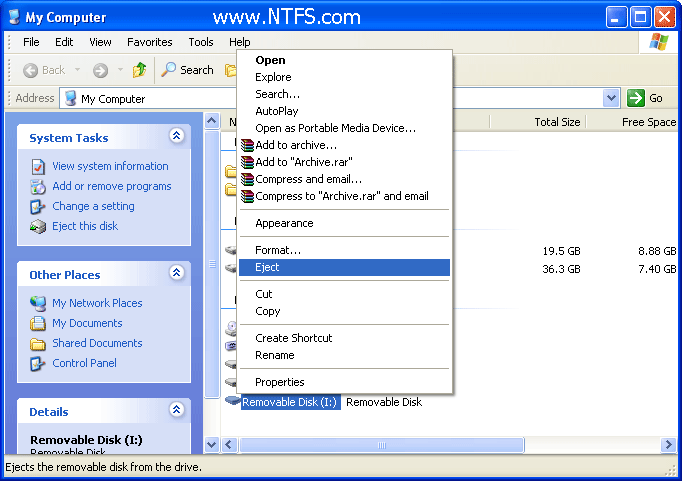

- #How to reformat a usb drive to be ntsf how to
- #How to reformat a usb drive to be ntsf serial number
- #How to reformat a usb drive to be ntsf series
- #How to reformat a usb drive to be ntsf windows
Find the taskbar (for those who do not know what it is, explain - it is at the bottom left of the screen).Now you need to click "Start", then - "Setup", then - "Control Panel" and "system".

#How to reformat a usb drive to be ntsf how to
Now it only remains for you to choose the one that best suits your needs.Now consider the fact the whole process, how to format a USB flash drive: That is, using this method we can change from one system to another without problems, although without being able to preserve what is stored in the unit.Īs you have seen, it is very easy and simple to go from a FAT32 to NTFS or exFAT format, being able to have a couple of methods, different in their way of working and in their result. Once it is finished, we will have the unit in the NTFS system that we have chosen, although from this way of changing the file systems of a device, we can also choose exFAT or even FAT32 if we want to have it again as it was at the beginning. Once we are clear about this, all that remains is to click on Start for the process to begin.if it is activated, the system will manage it quickly, but if it is deactivated, the formatting will be more intensive, but also considerably slower. Once we have chosen it, we will see a button at the bottom where it says Quick Format.Now we will see a window where we will have the possibility to choose which is the file system we want for the unit.At that moment we must choose the Format option from the drop-down menu of all those that are presented to us.We locate the unit in which we want to change the file system and click on it with the right mouse button.
#How to reformat a usb drive to be ntsf windows
#How to reformat a usb drive to be ntsf serial number
#How to reformat a usb drive to be ntsf series
It also includes a series of new features such as the ability to configure permissions, support instant backups or file encryption.

Here we find a bit the opposite situation that we saw with FAT32, since it is much more modern, eliminating the two limitations that we had before, such as 4 GB for a file and 8 TB for partitions.

The fact of taking so long makes it compatible with practically all kinds of devices, from a computer to a television, through a mobile or a console.īut being old we can also talk about limitations such as not being able to store files larger than 4 GB or that partitions cannot be larger than 8 TB, something, the latter, that does not affect too much. It is the oldest, being among us since Windows 95, developing to replace FAT16.


 0 kommentar(er)
0 kommentar(er)
